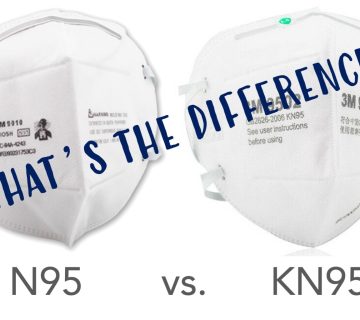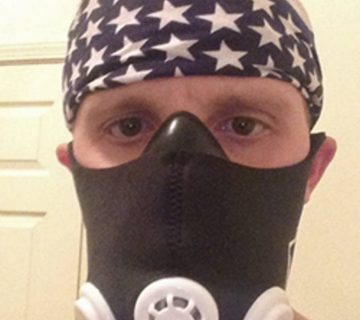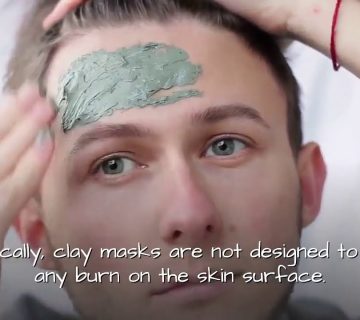Are High Altitude Masks with Low Oxygen Worth It?
Have you ever seen someone at the gym or on a trail wearing a mask that looks like it belongs in a sci-fi movie? Chances are, they’re using a high altitude mask, also called an elevation training mask. These devices promise to boost your stamina, strengthen your lungs, and make you feel like you’re training on a mountain peak—all without leaving sea level. But do they really work? Are they safe? And should you add one to your workout gear?
In this deep dive, we’ll explore everything you need to know about high altitude masks that restrict oxygen. We’ll break down the science, bust some myths, and give you practical tips to decide if they’re right for you. Whether you’re a runner, a cyclist, or just someone curious about fitness trends, stick around—we’re going to uncover the truth and then some!
What Are High Altitude Masks, Anyway?
High altitude masks are wearable devices that cover your mouth and nose, designed to make breathing harder during exercise. They use valves or vents to limit how much air you can take in, which is supposed to mimic the low-oxygen conditions you’d experience at high elevations—like training in the Rocky Mountains or the Alps. The idea is that by working out with less oxygen, your body adapts, your lungs get stronger, and you perform better when you take the mask off.
These masks have become popular with athletes, from marathon runners to football players, who want an edge in their training. Brands like Training Mask and Mile High Training claim they can improve endurance, increase lung capacity, and even help your body use oxygen more efficiently. But here’s the big question: does science back this up, or is it just clever marketing?
How Do High Altitude Masks Work?
Let’s get into the nitty-gritty. When you’re at sea level, the air you breathe is about 21% oxygen. At higher altitudes, the air gets “thinner” because the pressure drops, meaning there’s less oxygen available in each breath. This forces your body to work harder to get the oxygen it needs, triggering adaptations like more red blood cells to carry oxygen to your muscles.
High altitude masks don’t actually change the oxygen percentage in the air—they restrict how much air you can inhale. Think of it like drinking a milkshake through a tiny straw instead of a big one. You’re still getting the same milkshake (air with 21% oxygen), but it’s tougher to suck it in. This restriction is supposed to train your breathing muscles (like your diaphragm) and simulate that high-altitude challenge.
The Science Behind the Claims
Manufacturers say this process boosts your aerobic capacity (how well your body uses oxygen during exercise) and builds respiratory strength. Some even claim it mimics “altitude training,” a method elite athletes use by living or training at high elevations. But here’s where it gets tricky—research shows these masks don’t fully replicate true altitude conditions. Let’s unpack that next.
Do High Altitude Masks Really Simulate Altitude?
One of the biggest selling points of these masks is that they make you feel like you’re training at 9,000 feet or higher. But do they deliver on that promise? Not quite.
What Real Altitude Does
At high altitudes—say, 7,000 feet or more—the lower air pressure reduces the oxygen your lungs can pull in. Over time (think weeks, not hours), your body responds by producing more erythropoietin (EPO), a hormone that ramps up red blood cell production. More red blood cells mean more oxygen gets to your muscles, which can boost endurance when you return to sea level. This is why runners train in places like Colorado or Kenya.
What Masks Do Instead
High altitude masks don’t lower the oxygen in the air—they just make it harder to breathe. Studies, like one from the University of Wisconsin-La Crosse, found that oxygen saturation (the amount of oxygen in your blood) drops only slightly with a mask—about 2% (from 96% to 94%). Compare that to real altitude, where saturation can plummet to 89% at 9,000 feet or even 63% at 15,000 feet. That’s a huge difference!
Instead of creating a true low-oxygen (hypoxic) state, masks act more like a resistance workout for your lungs. They strengthen your breathing muscles, but they don’t trigger the same blood-level changes as real altitude training. So, if you’re hoping to mimic a mountain climb, you might be out of luck.
✔️ Pros and ❌ Cons
- ✔️ Strengthens your diaphragm and other breathing muscles.
- ❌ Doesn’t fully replicate the low-oxygen benefits of altitude.
Benefits of High Altitude Masks: What’s Proven?
Even if they don’t perfectly mimic altitude, high altitude masks might still offer some perks. Let’s look at what research and real-world use say.
1. Stronger Breathing Muscles
A 2023 study from King Faisal University tested athletes using masks during high-intensity interval training (HIIT) for eight weeks. The results? Those who wore masks improved their lung function and respiratory muscle strength more than the control group. Think of it like lifting weights for your lungs—over time, breathing feels easier.
2. Better Endurance (Maybe)
Some users report feeling less winded during workouts after training with a mask. A small study from the International Journal of Exercise Science found that masks increased ventilatory threshold—the point where breathing gets tough during exercise—by about 15%. This could mean you can push harder before feeling out of breath.
3. Mental Toughness
Here’s something you won’t find in many articles: training with a mask is hard. It forces you to push through discomfort, which can build mental grit. Imagine running with a mask on—you’re gasping for air, but you keep going. That resilience could carry over to race day or a tough game.
Unexplored Benefit: Breathing Awareness
One thing rarely discussed is how masks make you think about your breathing. Most of us don’t pay attention to how we inhale and exhale during exercise. A mask forces you to focus, which could improve your breathing technique long-term—something no study has fully explored yet.
Risks and Downsides You Should Know
Before you strap on a mask, let’s talk about the flip side. These devices aren’t risk-free, and they’re not for everyone.
1. Not Enough Oxygen Drop for Big Gains
Research shows the hypoxic effect (low oxygen) from masks is too small to spark major changes like increased red blood cells. A 2016 study in the Journal of Sports Science Medicine found no significant boost in VO2 max (a key measure of aerobic fitness) after six weeks of mask use compared to regular training.
2. Safety Concerns
Breathing harder can stress your body in ways you might not expect:
- Hyperventilation: You might over-breathe, leading to dizziness or fainting.
- Heart Strain: If you have high blood pressure or heart issues, the extra effort could be risky.
- Discomfort: Some users report feeling anxious or claustrophobic.
3. Could Hurt Performance
For strength training or short, intense efforts (like weightlifting), masks might hold you back. A study from the Journal of Strength and Conditioning Research showed slower bar speeds and higher fatigue when lifting with a mask—meaning you might not get the most out of your workout.
❌ Watch Out For
- ❌ Don’t use if you have breathing or heart conditions without a doctor’s OK.
- ❌ Avoid during heavy lifting—stick to cardio or endurance work.

Interactive Quiz: Should You Try a High Altitude Mask?
Let’s make this fun! Answer these quick questions to see if a mask might fit your goals. Tally your “Yes” answers at the end.
- Do you focus on endurance sports like running or cycling? (Yes/No)
- Are you looking to improve your breathing strength? (Yes/No)
- Do you enjoy pushing your limits with tough workouts? (Yes/No)
- Do you have any heart or lung issues? (Yes/No—count as a “No” for safety)
Results:
- 3-4 Yeses: A mask might be worth a shot!
- 1-2 Yeses: Maybe stick to traditional training for now.
- 0 Yeses: Probably not for you—save your money!

How to Use a High Altitude Mask the Right Way
If you’re sold on trying one, here’s how to get started safely and effectively.
Step-by-Step Guide
- Start Low: Most masks let you adjust resistance (like “3,000 feet” or “9,000 feet”). Begin with the easiest setting to get used to it.
- Use for Cardio: Stick to running, biking, or HIIT—not heavy squats or deadlifts.
- Short Sessions: Try 20-30 minutes, 2-3 times a week, and build up slowly.
- Listen to Your Body: If you feel dizzy or overly tired, stop and take it off.
- Combine with Training: Pair it with your regular workouts, not as a replacement.
Sample Workout
- Warm-Up: 5 minutes of easy jogging (no mask).
- Main Set: 20 minutes of intervals—1 minute fast, 1 minute slow—with the mask on.
- Cool Down: 5 minutes walking (mask off).
Pro Tip
Nasal breathing is key! The mask forces you to breathe through your nose, which can improve oxygen uptake over time. Practice this even without the mask.
What the Latest Trends Say (March 2025)
Curious what people are saying right now? Based on chatter on X and Google Trends, interest in high altitude masks is steady, with a spike around fitness resolutions in early 2025. Users are asking:
- “Do these masks really help with stamina?”
- “Are they safe for beginners?”
- “What’s the best mask for under $50?”
One trending topic: people are debating if masks help with mental toughness as much as physical gains—a point we’ll dig into more later. Searches for “high altitude mask benefits for runners” and “low oxygen training risks” are up, showing folks want both the pros and cons.
Unique Angle: Could Masks Boost Recovery?
Here’s something you won’t find in most articles: could high altitude masks aid recovery? No study has directly tested this, but let’s think it through.
When you train with a mask, your body learns to cope with less oxygen. After a tough workout, your muscles need oxygen to repair. If your lungs are stronger from mask training, you might deliver oxygen to those muscles more efficiently during rest. It’s a theory worth exploring—imagine finishing a marathon and bouncing back faster because your breathing is on point.
Mini Experiment Idea
Try this: After a hard run, wear the mask at a low setting for 10 minutes of light walking. Does your breathing feel steadier? Do you feel less wiped out? It’s not science yet, but it’s a starting point!

Comparing Masks to Other Training Tools
How do high altitude masks stack up against alternatives? Let’s break it down.
| Tool | What It Does | Pros | Cons |
|---|---|---|---|
| High Altitude Mask | Restricts airflow | Builds lung strength | Limited oxygen drop |
| Altitude Tent | Lowers oxygen in a sleep chamber | Mimics real altitude | Expensive ($1,000+) |
| Breath Hold Training | Teaches you to hold breath during exercise | Free, improves CO2 tolerance | Takes practice, no gear needed |
Why Masks Might Win
Masks are portable and affordable (most cost $30-$80), unlike tents or trips to the mountains. They’re also easier to fit into a busy schedule—no need to sleep in a pod!
Real-Life Stories: Do They Work for Regular People?
Let’s hear from some everyday folks who’ve tried these masks.
- Jake, 29, Runner: “I used a mask for three months before a half-marathon. My lungs felt stronger, but my pace didn’t change much. Still, I liked the challenge.”
- Sara, 34, Cyclist: “It made my rides brutal, but I recovered faster after big hills. Maybe it’s mental, but I’ll keep using it.”
These stories hint at a mix of physical and psychological benefits—something science is only starting to catch up on.
Interactive Checklist: Your Mask Game Plan
Ready to give it a go? Use this checklist to stay on track:
- ✔️ Pick a mask with adjustable settings.
- ✔️ Start with 1-2 sessions a week, 20 minutes max.
- ✔️ Focus on endurance workouts, not strength.
- ❌ Don’t push through dizziness—safety first!
- ✔️ Track how you feel after a month—stronger lungs? More stamina?
The Mental Edge: An Untapped Benefit
Here’s a fresh take: what if the real power of high altitude masks is in your head? Training with one is tough—it mimics the struggle of a hard race or a steep climb. Pushing through that could make you mentally tougher, ready to tackle anything.
Think about it: if you can run 5 miles feeling like you’re suffocating, a normal workout might feel like a breeze. This “mind over matter” angle hasn’t been studied much, but athletes like NFL star Marshawn Lynch have used masks to prep for game-day grit. Could this be the secret sauce for weekend warriors too?
Final Verdict: Are They Worth It?
After digging into the science, trends, and real experiences, here’s the bottom line:
- Yes, if… You want stronger lungs, enjoy a challenge, or need a mental boost. They’re a solid tool for endurance buffs who don’t mind the effort.
- No, if… You’re expecting a shortcut to elite altitude gains or have health concerns. They won’t transform your blood like a month in the mountains would.
My Take
High altitude masks aren’t magic, but they’re not useless either. They’re like a tough coach—pushing you to work harder and maybe making you a little tougher in the process. Pair them with smart training, and you might just surprise yourself.





No comment